How to Choose a PC for 3D modeling and rendering
06 Nov 2023
0 Comments
Most powerful PCs are built for gaming. In the end, quite modest parameters are enough for Internet surfing and working with most programs. But there is a separate category of software that is no less demanding on hardware than games. These are 3D modeling and rendering programs. What should you pay attention to when assembling a PC for comfortable work with such software? The answers are in our guide.
How it works
3D modeling is the process of creating a three-dimensional model of an object from graphic primitives. An integral part of the modeling is a preview system that allows you to look at the actions performed on the object. It uses the graphics card and a few CPU threads moderately. Some simulation stages use only one core, so single-threaded performance is important.
Rendering is the process of creating two-dimensional images from 3D models. For professional rendering, rasterization or tracing (rays or paths) can be used. There are also more complex equation techniques. The first two methods are also used in games, but to achieve a cinematic image, professional rendering uses many more polygons, light sources, and reflections. Using equation techniques is even more labor-intensive on computer hardware. It can take hours to create even one high-quality frame. This is incomparable to the frame rate in games.
Professional rendering can be done on both the CPU and GPU. In this case, the corresponding processor will be fully loaded.
• Rendering on the central processor is of the highest quality. It is practically unlimited by the amount of memory used on modern systems: you can always install more RAM. Suitable for the most difficult tasks. Runs slower than on a GPU.
• Rendering with a graphics card is faster than with a CPU. However, it also has its drawbacks. The quality may be lower, and the amount of local memory on the graphics adapter limits the complexity of the scene.
• Hybrid rendering combines the power of the CPU and GPU while maintaining the benefits of both methods.
General recommendations
In most cases, the following hardware is sufficient for the 3D modeling process.
• A modern inexpensive video card with a memory capacity of 6-8 GB and average computing power. For example, NVIDIA GeForce RTX3050 or AMD Radeon RX6600.
• Fast single-thread processor. The number of cores is not so important, but in modern realities, it is worth considering models no younger than the Core i5-12400 or Ryzen 5 5600X.
• RAM from 16 GB, in dual-channel mode. There are no special requirements for operating speed.
• SSD - for quickly opening and saving projects. A large volume is not necessary - you can use a hard drive to store finished projects. NVMe SSDs are desirable: their linear speeds are significantly higher than those of SATA models. If you are planning large-scale projects, you should choose from top-end NVMe drives with PCI-E 4.0 x4 interface.
The rendering process requires a lot of system resources. Unlike modeling, rendering is an ongoing computational process. What do you need to consider with CPU rendering?
• The higher the multi-threaded performance of the processor, the faster the rendering process will be. That is the newer the generation of the CPU, the more cores and threads it has, the better.
• 16 GB of RAM is enough for undemanding tasks. But for the majority of projects, the optimal limit is 32 GB. If very high-resolution textures are used, you may need 64 GB of RAM or more.
• Fast RAM is useful when using processors with a large number of cores. The memory must be able to “supply” data to all computing cores in a timely manner. If budget processors are used, the benefit from fast memory will not be so noticeable.
Here are a few things to remember when rendering with your graphics card:
• Most GPU renderers use the CUDA API from NVIDIA. Only a few support the universal OpenCL API, running on cards from both NVIDIA and AMD. Therefore, you need to take into account the render with which you plan to work: not all of them can be helped by a “red” card.
• The more shader processors a video card has, the faster the rendering process will be.
• The minimum amount of video card memory for rendering is 8 GB. As with the main RAM, the more video memory, the better.
• GPU rendering can use multiple video cards at once. Productivity, in this case, increases almost linearly.
Remember that rendering is a full load of hardware for many hours. Therefore, you need to take care of good cooling and a ventilated case so that the components do not overheat. For the same reason, you need to pay attention to the power supply. It is advisable to take high-quality models with a reserve of power.
If you plan to render on a processor, you should take care of a high-quality VRM subsystem on the motherboard.
Another point is important if the system plans to have several video cards for rendering. Make sure that your processor and motherboard combination has the required number of PCI-E slots that support simultaneous operation in x16 or x8 mode. If one of the slots is limited to x4 mode, this is fraught with noticeable losses in rendering speed.
Brief information on popular renderers
Cycles
The Cycles renderer from the Blender Foundation is one of the most popular. In addition to Blender, it is available for 3ds Max, Cinema 4D, Poser and Rhino. Can use both CPU and video card capabilities using the CUDA and OpenCL APIs - so any available hardware works with it. Supports hybrid mode.
Minimum system requirements:
• Processor: four cores with support for SSE2 instructions;
• Video card: 2 GB memory, NVIDIA GeForce 400/AMD Radeon HD7000 and higher;
• RAM: 8 GB.
Recommended system requirements:
• Processor: eight cores;
• Video card: 8 GB memory;
• RAM: 32 GB.
Corona
The Corona renderer from Chaos is no less popular. It performs calculations only on the CPU and is considered one of the reference ones in this regard. Compatible with 3ds Max and Cinema 4D.
Minimum system requirements:
• Processor: supporting SSE4.1 instructions;
• RAM: 4 GB or more.
Redshift
Maxon's Redshift was an early adopter of GPU computing. Leader in GPU speed. Available for Blender, Cinema 4D, 3ds Max, Maya, Katana, and Houdini.
CPU calculations are also supported but are very slow. Hybrid mode available. However, it does not provide a significant increase in speed compared to calculations on a video card. Redshift simply cannot use many CPU threads efficiently. That's why it has modest CPU requirements.
Minimum system requirements:
• Processor: supporting SSE2 instructions;
• Video card: NVIDIA GeForce GTX1070/AMD Radeon RX Vega 56, 8 GB memory;
• RAM: 8 GB.
Recommended system requirements:
• Processor: Core i7 with a frequency of 3.0 GHz and higher;
• Video card: NVIDIA GeForce RTX2060 Super/AMD Radeon RX Vega 56 or higher, 8 GB of memory or more;
• RAM: 16 GB or more.
Octane
Octane from OTOY is slower than Redshift but of higher quality. Compatible with Blender, 3ds Max, Maya, Cinema 4D and SketchUp.
Octane on Windows OS runs exclusively using the CUDA API. So, to use it, an NVIDIA video card is required. CPU computing is not supported, so only the graphics card is listed in the system requirements. It’s clear that the renderer does not have a hybrid mode.
Minimum system requirements:
• Video card: 2 GB memory, NVIDIA GeForce GTX650 or higher;
• RAM: 8 GB.
Recommended system requirements:
• Video card: 8 GB memory, NVIDIA GeForce GTX1070 or higher;
• RAM: 16 GB or more.
V-Ray
Chaos Group's V-Ray engine supports CPU, GPU, and hybrid computing. Available for Blender, 3ds Max, Maya, Cinema 4D, and SketchUp.
The GPU renderer can use both the CUDA API and OpenCL, so V-Ray works on cards from both manufacturers. In addition, the program fully supports modern multi-core processors. V-Ray does not have general system requirements; the rule “more is better” applies here. However, it is worth noting that calculations on AMD video cards are slower than on NVIDIA.
Arnold
The Arnold renderer from Autodesk is relatively new but has already gained some popularity. Quite high quality, but slow. It supports rendering using the CPU and the CUDA API, so it is only “friendly” with NVIDIA video cards. In addition to the company's own products 3ds Max and Maya, it is available for Cinema 4D, Houdini, and Katana.
Minimum system requirements:
• Processor: supports SSE 4.1 instructions;
• Video card: NVIDIA GeForce GTX950 and higher;
• RAM: 8 GB or more.
RenderMan
Pixar's RenderMan engine has been used in many science fiction and animated films. CPU and GPU computing are supported. Moreover, as stated, GPU rendering has the same quality as processing on the CPU. There is also a hybrid mode. Compatible with Blender, Maya, Houdini, and Katana.
Minimum system requirements:
• Processor: supports AVX instructions;
• Video card: NVIDIA GeForce GTX950 and higher;
• RAM: 4 GB or more.
Basic configuration
The situation with AMD video cards is still sad: only a couple of renderers support them. If you will only be working with them, it makes sense to look towards the “red” card - though only if the selected Radeon model is faster or has more memory than its GeForce competitor. Otherwise, it is better to prefer NVIDIA products for rendering.
There is no need to chase professional Quadro models - there is no difference in rendering speed between them and their GeForce gaming counterparts. Quadro has two advantages. First: faster preview work in CAD programs. This is achieved through a special driver. Second: Quadro models are usually equipped with more memory. Both advantages are offset by one big disadvantage - the cards in the series are much more expensive than GeForce. At the same time, today GeForce also has models with a fairly large amount of memory.
Let's start assessing the required hardware. RAM can be installed at 16 GB, but this will not lead to much budget savings with noticeable limitations in the CPU renderer. Therefore, we will designate the base volume as 32 GB. So, at a minimum, we will need:
• Processor Intel Core i5-12400 or AMD Ryzen 5600X (6 cores/12 threads);
• Motherboard based on Intel B660/B760 or AMD B450/B chipset with 6-8 power phases, VRM heatsinks, and four RAM slots;
• 32 GB DDR4-3600 RAM;
• Tower cooler with power dissipation starting from 150 W;
• Video card NVIDIA GeForce RTX3050 8 GB;
• NVMe drive with a capacity of 480-512 GB and linear speeds of 2-3 GB/s;
• Hard drive with a capacity of 2-3 TB;
• Power supply from 500 W with 80 Plus bronze certificate;
• A case with good ventilation and three to five fans (included in the kit or purchased separately).
This is the basic version of the system unit. At the time of writing, it will cost a little less than 800 dollars. The limiting factors of such a PC are the computing power of the processor and video card. For faster assembly, they need to be expanded based on the processor that will be the main one for rendering - central or graphics.
Configurations targeting CPU rendering
If the main rendering will be on the central processor, you should look towards powerful models. More complex scenes will also require more RAM. In an assembly up to 1000 dollars with an eye on the CPU renderer, compared to the basic version, you will need to replace the following components:
• Processor Intel Core i7-12700F (12 cores, 20 threads) or AMD Ryzen 9 5900X (12 cores, 24 threads);
• A compatible motherboard with at least eight power phases (in our case, the boards from the base assembly are sufficient);
• Tower cooler with a power dissipation of 200 W (in our case, the cooler from the base assembly is sufficient);
• 64 GB DDR4-3600 RAM.
This configuration will be twice as fast as the basic one in CPU rendering. If you want to speed up rendering even more, pay attention to the top processors for mainstream platforms LGA1700 and AM5. They are similar in performance to many HEDT models of yesteryear but cost less. For our assembly we prefer them. The performance will double again, but for such powerful CPUs, you will have to change the power supply and use liquid cooling.
• Processor Intel Core 9-13900 (24 cores, 32 threads) or AMD Ryzen 9 7950X (16 cores, 32 threads);
• Liquid cooling system with power dissipation from 250 W;
• Compatible motherboard. From 12 power phases;
• 64 GB DDR5-5200/5600 RAM;
• Power supply from 650 W, with two 8-pin processor power connectors. Certificate 80 Plus - from bronze and above.
Such a system unit will cost approximately 1400 dollars. For the most complex projects, the RAM can be expanded to 128 GB - then the PC will rise in price by another 2000 dollars.
Configurations targeting GPU rendering
If the main one is GPU rendering, then you will need to change the video card relative to the basic version. For older card models you will have to purchase a more powerful power supply.
• Replacing the RTX3050 with an RTX4060 Ti will speed up rendering up to two times. Such a computer will cost about 1000 dollars. To work with complex scenes, it is advisable to prefer card options with 16 GB of memory, which will be available soon.
• The RTX4070 Ti will render rendering twice as fast (and four times faster than the base version). However, you will also have to change the power supply - you will need at least 700 W. In this configuration, the cost of a PC will be about 1400 dollars.
For even higher rendering speeds, you can combine multiple video cards in one system, for example, a pair of RTX4070 Ti. But in the case of modern cards, this is not particularly profitable - such a combination will cost only a little less than the twice-as-fast RTX4090. However, it will require a more powerful power supply and a motherboard with two PCI-E x8 slots. As a result, the savings will go down the drain.
It is better to use one powerful video card. Replacing the following components will speed up the rendering by another half. At the moment, this is the maximum that can be achieved with one video card. The cost of such a PC will be about 2200 dollars.
• Video card NVIDIA GeForce RTX4090 24 GB;
• Power supply from 800 W with 12VHPWR connector;
Based on top-end configurations with a focus on CPU and GPU rendering, you can build a PC that will be equally good at both. This will be provided by the Core i9-13900/Ryzen 9 7950X processor and RTX4090 video card. With 64 GB of RAM, such a configuration will cost from 3000 dollars, with 128 GB - another 2 thousand more.




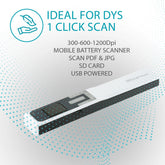









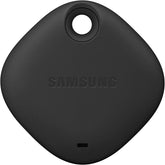
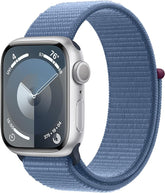

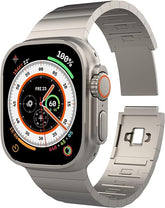

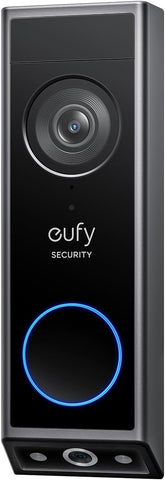

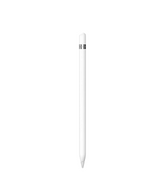

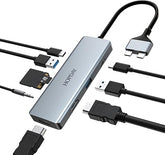

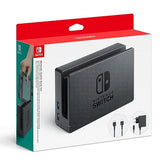
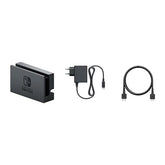
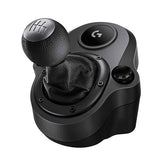
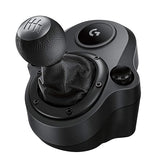
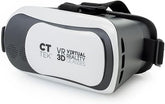
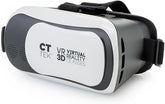

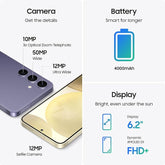
![["B0B1L87TMY"]](http://smarttechshopping.com/cdn/shop/products/7110BNil-dL._AC_SL1500_165x.jpg?v=1695449139)
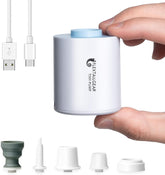
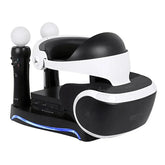





Leave a comment
Please note, comments need to be approved before they are published.